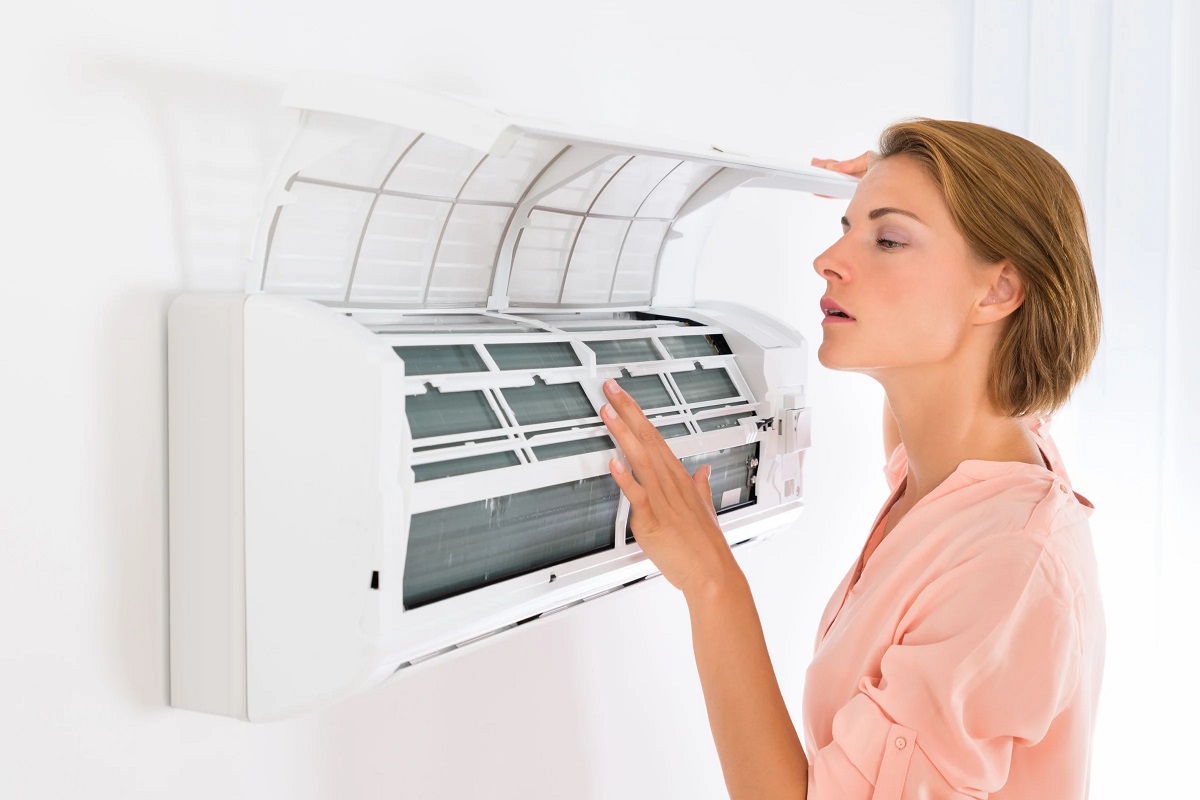

Articles
AC Clicking Noise When Turned On
Modified: November 2, 2024
Read our informative articles on how to troubleshoot and fix AC clicking noises when turned on. Discover common causes and effective solutions.
(Many of the links in this article redirect to a specific reviewed product. Your purchase of these products through affiliate links helps to generate commission for Storables.com, at no extra cost. Learn more)
Introduction
When you turn on your air conditioning system, you expect to feel the cool air flowing smoothly throughout your space. However, if you hear a clicking noise when you turn on your AC, it can be a cause for concern. Understanding the possible causes of this clicking noise and knowing how to troubleshoot it can help you restore your AC’s functionality and ensure your comfort.
There are several reasons why your AC might be making a clicking noise when turned on. It could be due to loose parts, a malfunctioning condenser fan, issues with the compressor, or even a problem with the electrical connections. Additionally, a dirty or clogged air filter, a faulty thermostat, or a defective capacitor could also contribute to the clicking sound.
In this article, we will explore each of these possible causes in detail and provide troubleshooting steps to help you identify and resolve the issue. While some of these steps can be performed by homeowners, it is important to note that if you are uncomfortable or unsure about any of the procedures, it is best to seek professional help. Now, let’s dive into the possible causes and troubleshooting steps for an AC clicking noise when turned on.
Key Takeaways:
- Addressing the clicking noise in your AC unit requires thorough inspection and troubleshooting, including checking for loose parts, examining the condenser fan, and evaluating the compressor. Safety and professional assistance are crucial for effective resolution.
- Regular maintenance, such as cleaning or replacing air filters, verifying electrical connections, and evaluating the thermostat, is essential for preventing and resolving AC clicking noise. Seeking professional help when needed ensures optimal performance and longevity of your air conditioning system.
Read more: Car AC Makes Hissing Noise When Turned On
Possible Causes of AC Clicking Noise When Turned On
When you hear a clicking noise coming from your air conditioning unit, it is essential to identify the underlying cause. Here are some possible reasons for the AC clicking noise:
- Loose Parts: Over time, the vibrations from the AC operation can cause screws, bolts, or other parts to become loose. When this happens, you may hear a clicking sound as the parts move or rattle against each other. Checking and tightening any loose parts can help resolve the issue.
- Condenser Fan Issues: The condenser fan is responsible for cooling the refrigerant and dissipating heat. If the fan blades are damaged or misaligned, they can hit nearby components, causing a clicking noise. Inspect the condenser fan and ensure it rotates smoothly and the blades are in good condition.
- Compressor Problems: The compressor is the heart of the AC system and is responsible for compressing refrigerant to facilitate heat exchange. If the compressor is worn out or malfunctioning, it may produce a clicking noise when activated. It is recommended to consult a professional technician to diagnose and address compressor issues.
- Dirty or Clogged Air Filters: When the air filters become dirty or clogged, they can restrict the airflow, causing strain on the AC components. This strain can lead to clicking sounds as the system attempts to function. Regularly cleaning or replacing the air filters can help prevent this issue.
- Electrical Connection Troubles: Loose or faulty electrical connections can cause intermittent current flow, resulting in clicking noises. Inspect the electrical connections in the AC unit and ensure they are secure and free from damage. If you notice any issues, consider consulting an electrician to address the problem.
- Thermostat Malfunction: A malfunctioning thermostat can send inaccurate signals to the AC system, causing it to cycle on and off excessively. This rapid cycling can produce a clicking noise. Check the thermostat settings, replace batteries if necessary, or consider recalibrating or replacing the thermostat if the issue persists.
- Defective Capacitor: The capacitor helps start the motors in your AC system. If the capacitor is faulty or failing, it can cause clicking sounds during startup. It is recommended to have a professional technician test and replace the capacitor if necessary.
Keep in mind that while these are common causes of AC clicking noise, there may be other issues specific to your system. If you are unable to identify the root cause or troubleshoot the problem effectively, it is advisable to seek the assistance of a qualified HVAC professional to ensure an accurate diagnosis and resolution.
Troubleshooting Steps for AC Clicking Noise When Turned On
Experiencing a clicking noise when you turn on your AC can be frustrating, but there are several troubleshooting steps you can take to identify and resolve the issue. Before performing any of these steps, ensure your AC unit is powered off and disconnected from the electrical supply. Let’s explore the troubleshooting steps:
- Check for Loose Parts: Carefully inspect your AC unit for any loose screws, bolts, or components. Tighten any loose parts using appropriate tools, being careful not to overtighten or strip any fasteners.
- Examine the Condenser Fan: Visually inspect the condenser fan and its blades. Make sure the blades are intact and properly aligned. If you notice any damage or misalignment, consider contacting a professional technician for repair or replacement.
- Inspect the Compressor: Check the compressor for any obvious signs of damage, such as leaks or worn-out components. If you suspect a compressor issue, it is recommended to seek professional assistance, as compressor repairs or replacements require specialized knowledge and equipment.
- Clean or Replace Air Filters: Remove the air filters and inspect them for dirt, debris, or clogs. If they are dirty or clogged, clean or replace them according to the manufacturer’s guidelines. Clean air filters improve airflow and can alleviate strain on the AC system.
- Verify Electrical Connections: Carefully examine the electrical connections in your AC unit. Ensure all connections are secure and free from corrosion or damage. If you notice any issues, it is advisable to consult an electrician to address the electrical problems.
- Evaluate the Thermostat: Check the thermostat settings and ensure they are appropriate for your comfort levels. Replace the batteries if needed and recalibrate or replace the thermostat if you suspect a malfunction.
- Test the Capacitor: If you are familiar with working on electrical components, you can test the capacitor using a multimeter to check its functionality. However, if you are unsure or uncomfortable, it is best to leave this step to a professional technician.
- Seek Professional Help if Necessary: If you have followed the troubleshooting steps and the clicking noise persists, or if you are unsure about any of the procedures, it is recommended to contact a qualified HVAC professional. They have the expertise and specialized tools to diagnose and repair AC issues effectively.
Remember, safety is paramount when troubleshooting your AC unit. If you are unsure or uncomfortable with any step, do not hesitate to seek professional assistance. Proper diagnosis and resolution of the clicking noise will ensure optimal performance and comfort from your air conditioning system.
Check for Loose Parts
One of the common causes of an AC clicking noise when turned on is loose parts within the unit. Over time, the vibrations from the AC operation can cause screws, bolts, or other components to become loose. This can result in a clicking sound as the loose parts move or rattle against each other.
The first step in troubleshooting this issue is to carefully inspect your AC unit for any signs of loose parts. Begin by turning off the power to the unit and disconnecting it from the electrical supply to ensure your safety.
Next, examine the exterior panels of the AC unit. Check if any screws or bolts appear to be loose or missing. Gently tighten any loose fasteners using the appropriate tools, such as a screwdriver or wrench. It is important to avoid overtightening or stripping any screws, as this can cause further damage to the unit.
In addition to the exterior panels, also check other components within the AC unit, such as the fan motor assembly or the blower housing. Ensure that all connections are secure and tight.
After tightening any loose parts, turn the power back on and test the AC. If the clicking noise has ceased, it is likely that the loose parts were causing the issue. However, if the clicking noise persists, it could indicate another underlying problem that requires further investigation.
If you are unsure about how to identify or tighten loose parts, or if the clicking noise persists despite your efforts, it is recommended to contact a professional HVAC technician. They have the expertise and tools necessary to diagnose and resolve the problem effectively.
By addressing any loose parts in your AC unit, you can not only eliminate the clicking noise but also help prevent further damage and ensure smooth operation of your air conditioning system.
Examine the Condenser Fan
The condenser fan plays a crucial role in the cooling process of your air conditioning system. It helps dissipate heat from the refrigerant, ensuring efficient and effective cooling. If the condenser fan is damaged or misaligned, it can lead to a clicking noise when the AC is turned on.
To troubleshoot the condenser fan, it is important to start by turning off the power to the AC unit and disconnecting it from the electrical supply for safety.
Begin by visually inspecting the condenser fan and its blades. Look for any signs of damage, such as bent or broken blades or any obstructions that could cause them to hit other components. If you notice any issues with the blades, it is recommended to contact a professional technician to repair or replace them, as attempting to fix them on your own could lead to further damage.
In addition to the blades, check the fan motor housing for any signs of damage or loose connections. Ensure that the fan motor is securely mounted and that there are no loose or missing screws or bolts. Tighten any loose connections, but be cautious not to overtighten them.
Once you have examined the fan blades and motor housing, gently spin the fan blades by hand. They should rotate smoothly without any resistance or wobbling. If you feel any resistance or notice excessive wobbling, it is an indication of a misalignment or a faulty motor. In such cases, it is best to consult a professional technician for proper diagnosis and repair.
If the condenser fan blades and motor are in good condition and properly aligned, the clicking noise may be caused by other factors. In such cases, it is recommended to continue with the other troubleshooting steps or consult a professional HVAC technician for further assistance.
Remember, the condenser fan is a crucial component of your AC system, and any issues with it can impact the performance and efficiency of the unit. Regular maintenance and inspections can help prevent problems and ensure optimal operation of your air conditioning system.
Inspect the Compressor
The compressor is a vital component of your air conditioning system. It is responsible for compressing the refrigerant, enabling heat exchange and cooling. If the compressor is malfunctioning or worn out, it can result in a clicking noise when the AC is turned on.
Before inspecting the compressor, it is important to ensure your safety by turning off the power to the AC unit and disconnecting it from the electrical supply.
Visually inspect the compressor for any signs of damage, such as leaks, cracks, or excessive wear. Pay close attention to the refrigerant lines and connections, as any refrigerant leaks can indicate a problem with the compressor. If you notice any of these issues, it is recommended to contact a professional HVAC technician for proper diagnosis and repair, as working with refrigerant requires specialized knowledge and equipment.
In addition to physical damage, listen closely to the compressor when you turn on the AC. If you hear a clicking noise coming directly from the compressor, it may indicate internal issues. These could include faulty internal valves, a failing motor, or worn-out components. In such cases, it is best to consult a professional technician to accurately diagnose and address the problem.
It’s important to note that compressor issues are complex and often require specialized knowledge and tools to resolve. Attempting to repair or replace a compressor without proper training can lead to further damage and potentially unsafe conditions.
Regular maintenance of your air conditioning system, including professional inspections, can help identify any potential problems with the compressor early on. This can help extend the lifespan of your unit and ensure efficient and reliable cooling.
If you suspect an issue with the compressor or if the clicking noise persists despite your inspection, it is best to seek the assistance of a qualified HVAC technician. They have the expertise and experience necessary to properly diagnose and address compressor problems, ensuring the optimal performance of your AC system.
Check the electrical connections and the capacitor. A clicking noise could indicate a faulty capacitor or loose wiring. If you’re not comfortable with electrical work, it’s best to call a professional technician.
Clean or Replace Air Filters
Dirty or clogged air filters can restrict airflow in your air conditioning system, leading to strain on the components and potentially causing a clicking noise. Regularly cleaning or replacing the air filters is an important step in ensuring the efficient operation of your AC unit.
To clean or replace the air filters, start by turning off the power to the AC unit and disconnecting it from the electrical supply. Locate the air filter compartment, which is typically situated near the return air duct or the indoor unit of the AC system.
If your air filters are reusable, carefully remove them from the compartment. Inspect them for accumulated dirt, dust, and debris. If they are dirty, gently clean them using a vacuum cleaner or by rinsing them under running water. Avoid using harsh chemicals or excessive force, as this can damage the filters. Once cleaned, allow the filters to dry completely before reinstalling them.
If your air filters are disposable, remove the old filters and dispose of them properly. Purchase a new set of filters that are compatible with your AC system’s specifications. Follow the manufacturer’s instructions for proper installation, ensuring a secure fit.
Regularly cleaning or replacing the air filters is recommended every one to three months, depending on the usage and the environment. Homes with pets or in areas with high levels of dust may require more frequent filter maintenance.
By maintaining clean air filters, you can improve the airflow in your AC system, reduce strain on the components, and prevent the buildup of dust and debris. This not only helps minimize the clicking noise but also enhances the overall efficiency and longevity of your air conditioning unit.
Remember to regularly schedule air filter maintenance as part of your routine AC care and maintenance. If you continue to experience clicking noise after cleaning or replacing the air filters, it may be necessary to further investigate other potential causes or seek professional assistance.
Verify Electrical Connections
Faulty or loose electrical connections in your air conditioning system can result in intermittent current flow, leading to a clicking noise when the AC is turned on. Verifying the electrical connections is an essential troubleshooting step to identify and resolve potential issues.
Before inspecting the electrical connections, ensure your safety by turning off the power to the AC unit and disconnecting it from the electrical supply.
Start by examining the electrical connections within the AC unit. Look for any loose wires, frayed insulation, or signs of corrosion. Ensure that all the connections are tightly secured and free from any damage. If you notice any issues or are unsure about the condition of the wiring, it is recommended to consult an electrician or a professional HVAC technician for assistance.
In addition to the internal connections, also check the electrical connection between the unit and the power source. Ensure that the power cord is securely plugged into a functioning outlet or that the electrical wiring connecting the unit to the circuit breaker is intact.
If you have access to a voltage tester or multimeter, you can use it to check the voltage at various points in the electrical connections. This can help identify any irregularities or inadequate power supply that may be causing the clicking noise.
If you are uncomfortable working with electrical components or are unsure about proper testing procedures, it is best to leave this step to a professional technician who has the expertise and tools to perform accurate electrical diagnostics.
Ensuring proper electrical connections in your air conditioning system is crucial for safe and effective operation. Faulty electrical connections not only contribute to the clicking noise but can also pose a risk of electrical hazards or damage to the AC unit.
If the clicking noise persists despite verifying and tightening the electrical connections, it may be necessary to proceed with other troubleshooting steps or seek professional assistance to diagnose and resolve the issue.
Evaluate the Thermostat
The thermostat in your air conditioning system plays a critical role in controlling the temperature and cycle of the unit. If the thermostat is malfunctioning or sending inaccurate signals, it can cause the AC to cycle on and off excessively, resulting in a clicking noise.
To evaluate the thermostat, start by turning off the power to the AC unit and disconnecting it from the electrical supply for safety.
Begin by checking the thermostat settings to ensure they are appropriately set for your desired comfort levels. Make sure the fan setting is set to “auto” rather than “on.” Setting the fan to “on” can cause it to run continuously, even when the AC is not actively cooling, leading to unnecessary cycling and clicking noise.
If your thermostat uses batteries, replace them with fresh ones. Low batteries can cause erratic behavior and inaccuracies in temperature readings.
You can also try recalibrating the thermostat. Refer to the manufacturer’s instructions for specific steps on recalibrating your thermostat model. Recalibration helps ensure that the thermostat accurately detects the ambient temperature and signals the AC system accordingly.
If you suspect a faulty thermostat, consider replacing it with a new one. Ensure that the replacement thermostat is compatible with your AC system and follow the manufacturer’s instructions for proper installation.
It is important to note that thermostat issues can be complex and may require the expertise of a professional HVAC technician. If you are uncertain about evaluating or replacing the thermostat on your own, it is recommended to seek professional assistance.
The thermostat is a vital component in maintaining a comfortable indoor environment. A properly functioning thermostat not only helps prevent unnecessary clicking noise but also ensures efficient and effective cooling.
If the clicking noise persists after evaluating the thermostat or if you are experiencing other issues with temperature control, it may be necessary to continue with the troubleshooting steps or consult a professional technician for further assistance.
Read more: Car Making Noise When AC Is On
Test the Capacitor
The capacitor in your air conditioning system helps start the motors that are responsible for powering various components. If the capacitor is defective or failing, it can lead to clicking sounds during startup. Testing the capacitor is an important step in troubleshooting the clicking noise issue.
Before testing the capacitor, it is crucial to turn off the power to the AC unit and disconnect it from the electrical supply to ensure your safety.
Locate the capacitor in your AC unit. It is typically a cylindrical or box-shaped component with two or three terminals. Take note of the wiring connections to ensure proper reinstallation in case it needs to be replaced.
Using a multimeter set to the capacitance mode, carefully discharge the capacitor by shorting the terminals with a screwdriver or an appropriate tool. Once discharged, proceed to test the capacitor according to the multimeter’s instructions.
Place the multimeter probes on the terminals of the capacitor and observe the reading on the display. A properly functioning capacitor should have a capacitance value within the range specified by the manufacturer. If the reading is significantly lower or higher, or if it shows no capacitance at all, it indicates a faulty capacitor that needs to be replaced.
Testing the capacitor can be challenging for those without experience or knowledge in working with electrical components. If you are unsure about the testing process or uncomfortable handling capacitors, it is best to seek the assistance of a professional HVAC technician who has the expertise and tools required for accurate testing and capacitor replacement.
Replacing a faulty capacitor is typically a straightforward process. However, it is important to match the new capacitor with the old one in terms of capacitance, voltage, and type. Improper replacement can lead to further issues and potential damage to the AC system.
Testing and replacing a faulty capacitor can help eliminate the clicking noise during startup and ensure the proper functioning of your air conditioning system. If the clicking noise persists even after testing and replacing the capacitor, it may be necessary to continue with further troubleshooting steps or seek professional assistance.
Seek Professional Help if Necessary
If you have followed the previous troubleshooting steps and the clicking noise in your AC unit persists, or if you are unsure about performing any of the procedures, it is advisable to seek the assistance of a qualified HVAC professional. They have the expertise, knowledge, and specialized equipment required to accurately diagnose and resolve complex AC issues.
A professional technician can conduct a thorough inspection of your air conditioning system to identify the root cause of the clicking noise. They have the experience to handle various components and can perform advanced diagnostic tests to pinpoint the problem.
By contacting a professional, you can benefit from their in-depth understanding of HVAC systems. They can provide you with a detailed explanation of the issue, offer professional recommendations, and perform the necessary repairs or replacements efficiently and effectively.
Attempting to diagnose or repair complex AC problems without the appropriate knowledge and tools can lead to further damage or potentially unsafe conditions. Moreover, tinkering with your AC system without proper training may void any existing warranties.
When seeking professional help, be sure to choose a reputable HVAC company or technician. Consider their experience, certifications, and customer reviews to ensure you are getting reliable service. A qualified professional will not only resolve the clicking noise issue but also provide valuable maintenance advice to prevent future problems.
Remember, the expertise of a professional technician can save you time, effort, and potential headaches. Seeking professional help ensures optimal performance and enhances the lifespan of your air conditioning system.
Keep in mind that routine maintenance and regular inspections by professionals are crucial for the longevity and efficiency of your AC unit. Schedule annual maintenance appointments to prevent issues and ensure the proper functioning of your air conditioning system.
Conclusion
Experiencing a clicking noise when you turn on your air conditioning system can be a cause for concern. However, by understanding the possible causes and following the appropriate troubleshooting steps, you can identify and resolve the issue, ensuring the optimal performance of your AC unit.
We explored several potential causes of the clicking noise, including loose parts, condenser fan issues, compressor problems, dirty air filters, faulty electrical connections, malfunctioning thermostats, and defective capacitors. By systematically inspecting and addressing these potential issues, you can eliminate the clicking noise and restore the smooth operation of your air conditioning system.
While some troubleshooting steps can be performed by homeowners, it is essential to prioritize safety. If you feel unsure or uncomfortable with any procedure, it is advisable to seek professional help from a qualified HVAC technician. They have the expertise, knowledge, and tools required to accurately diagnose and resolve complex AC issues.
Regular maintenance and inspections are key to preventing AC problems in the first place. Keeping your system clean, replacing air filters regularly, checking electrical connections, and maintaining a properly calibrated thermostat can go a long way in maintaining the efficiency and longevity of your AC unit.
Remember, a well-functioning air conditioning system provides comfort and improved indoor air quality, especially during the hot summer months. By addressing the clicking noise issue promptly and implementing proper maintenance practices, you can ensure a comfortable and enjoyable indoor environment for you and your loved ones.
If you continue to experience issues or are unable to resolve the clicking noise, it is best to consult a professional HVAC technician. They can provide expert guidance, diagnose the problem accurately, and perform the necessary repairs or replacements to restore your AC system to optimal condition.
By taking proactive measures and seeking professional help when needed, you can enjoy the full benefits of a properly functioning air conditioning system for years to come.
Frequently Asked Questions about AC Clicking Noise When Turned On
Was this page helpful?
At Storables.com, we guarantee accurate and reliable information. Our content, validated by Expert Board Contributors, is crafted following stringent Editorial Policies. We're committed to providing you with well-researched, expert-backed insights for all your informational needs.
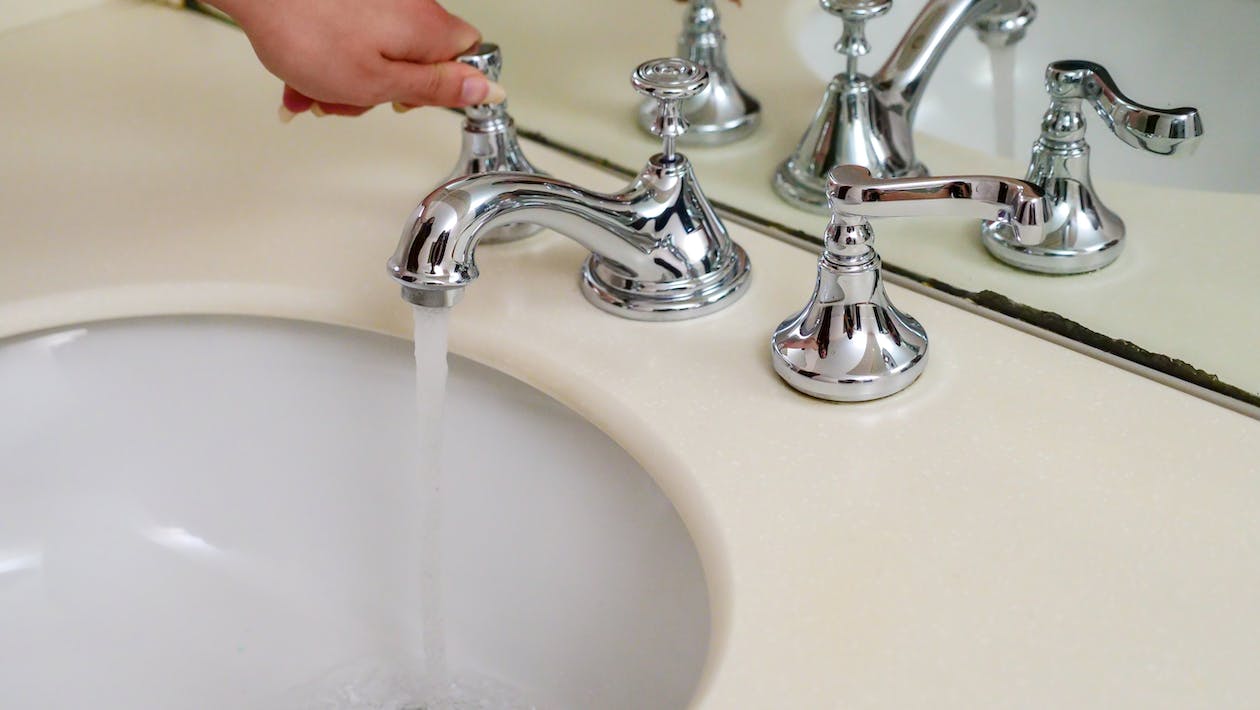

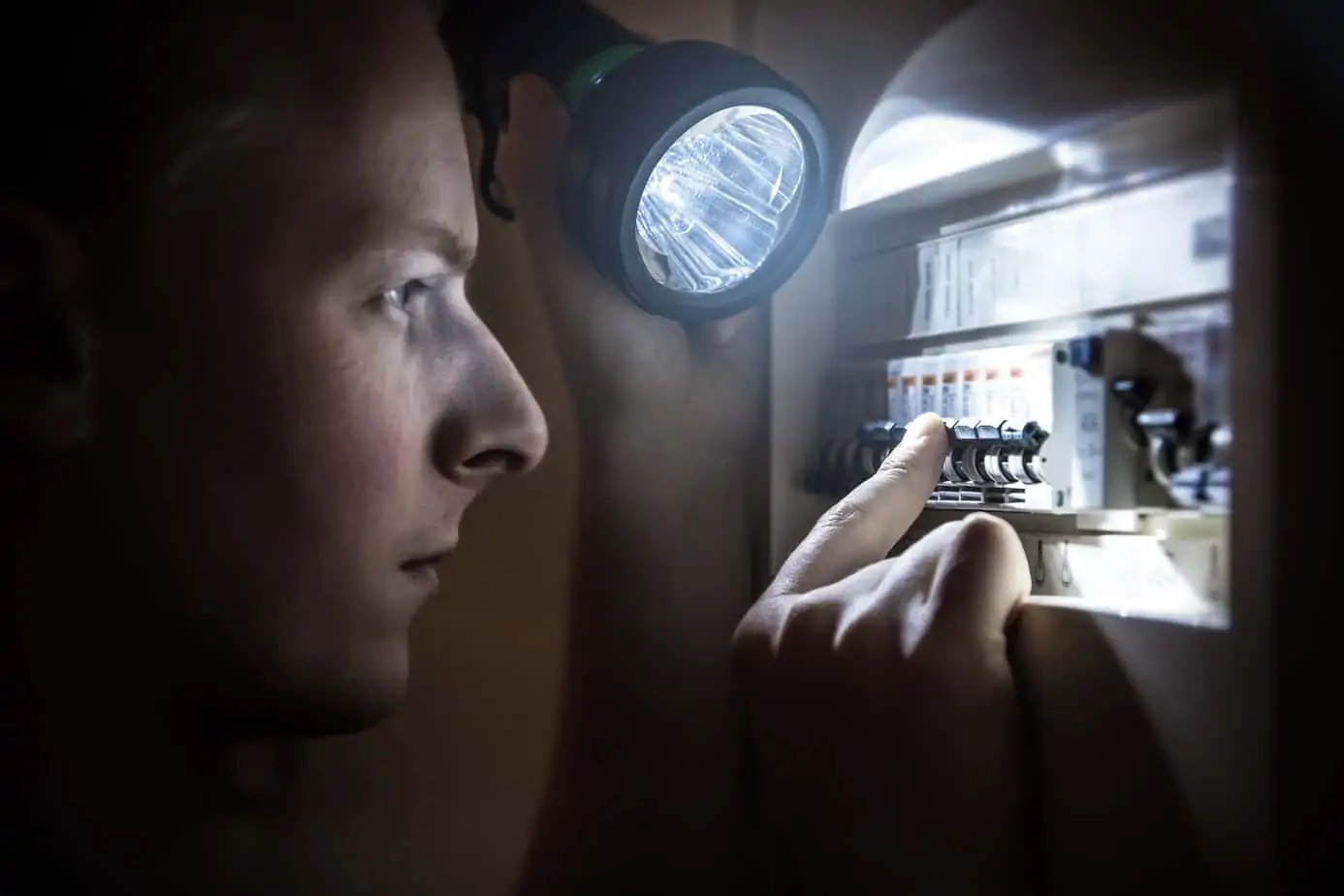







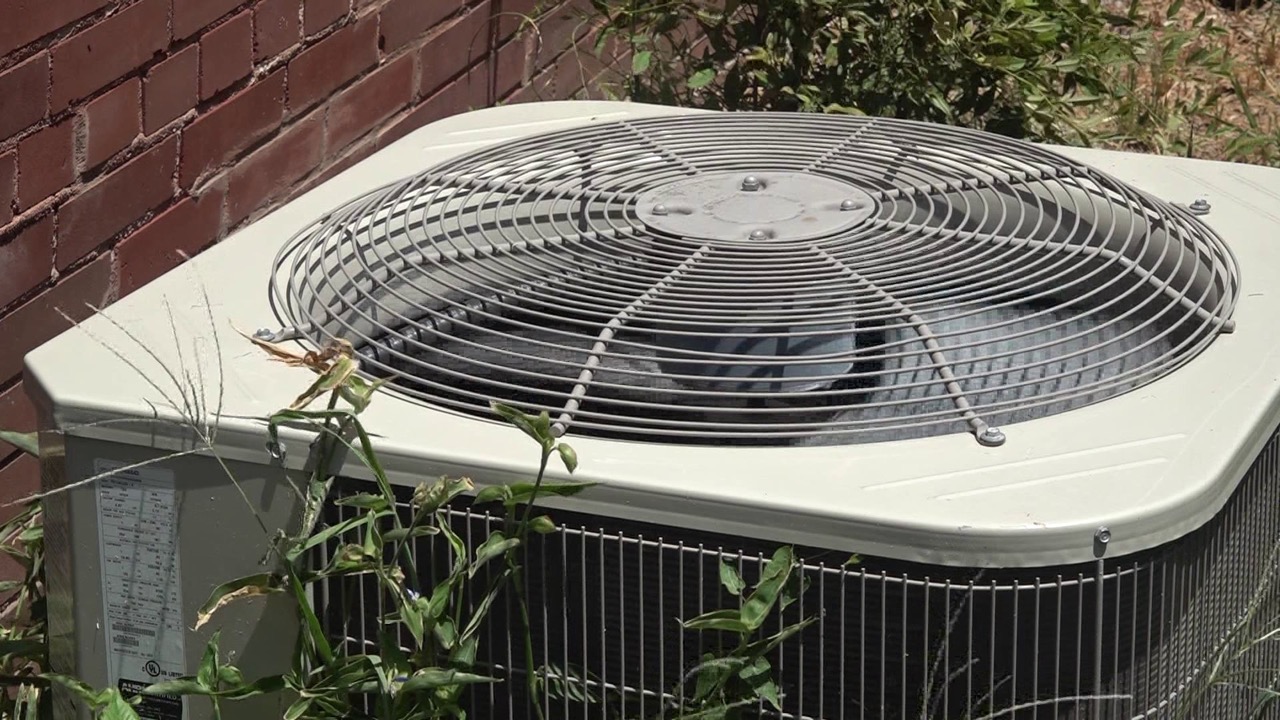
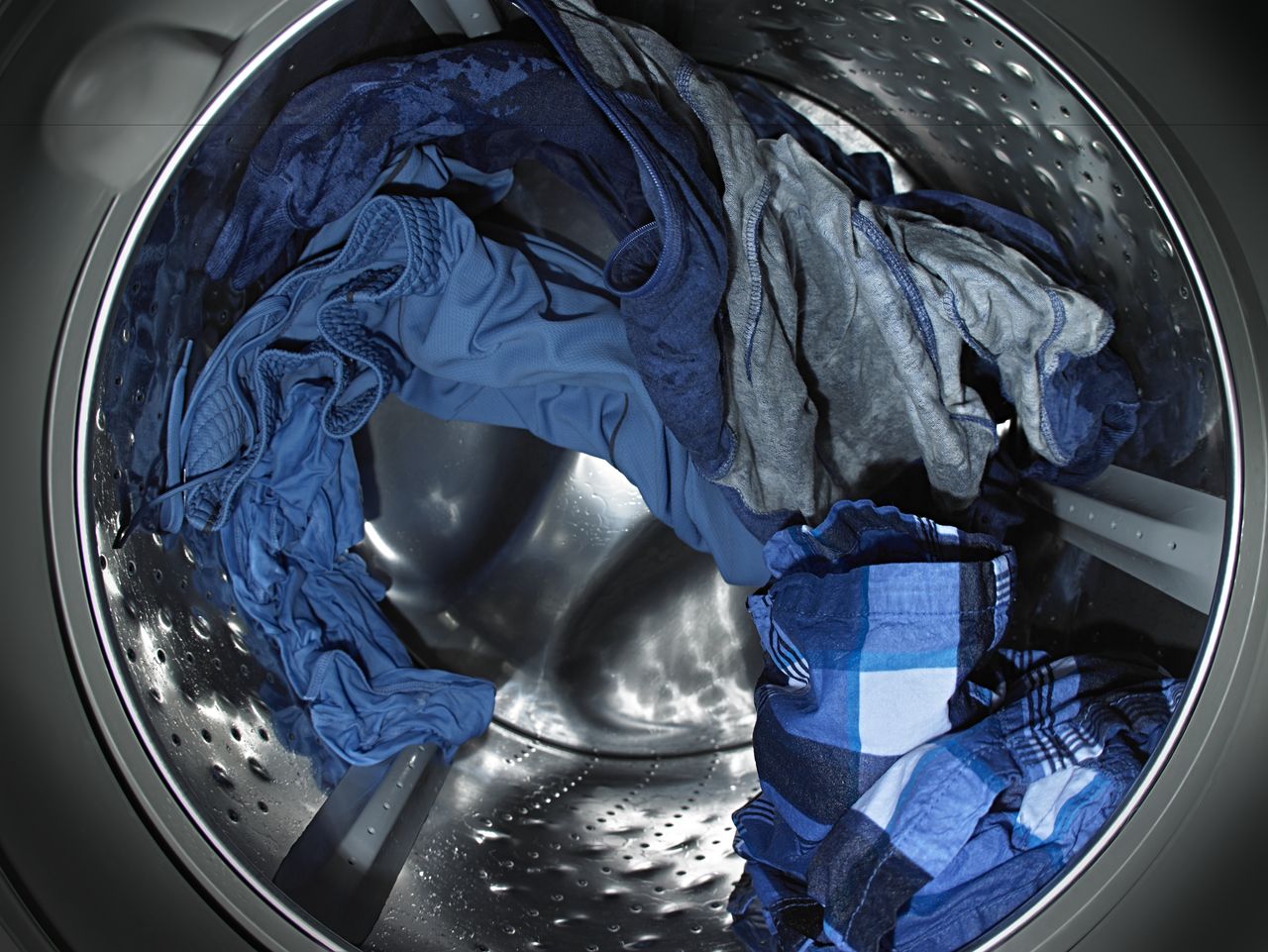


0 thoughts on “AC Clicking Noise When Turned On”